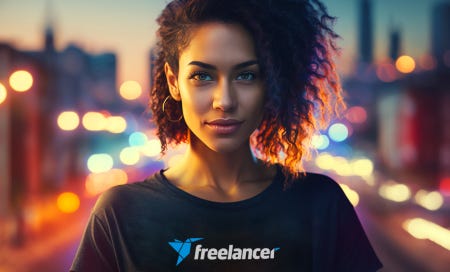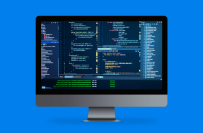
Check Document 2- AI Powered Influencer marketing platform- please give your last offer
$3000-5000 USD
Closed
Posted 30 days ago
$3000-5000 USD
Paid on delivery
Please check provided requriements and features document.
We are looking for an experienced full-stack developer or development team to build an AI-powered influencer marketing platform that connects companies with influencers globally. The platform should allow influencers to create detailed profiles and manage their online presence, while businesses can search, filter, and match with influencers using advanced AI-driven algorithms and NLS Integration.
Unlike traditional platforms that facilitate direct campaign creation and payment between businesses and influencers, this platform will focus on subscription-based services for both parties. Additional features like profile verification, data analytics, profile boosting, and affiliate marketing opportunities for influencers will enhance user experience and engagement.
The ideal candidate/team should have extensive experience with full-stack development, AI/ML integration, and subscription-based monetization.
Detailed information and to do list on the document. Please check the requriements before giving an offer!
For the AI question:
Key Components of the AI Matching System:
Data Collection and Preparation:
Data Sources:
Influencers' profiles will contain structured data (e.g., follower count, engagement rate, demographics) and unstructured data (e.g., bio descriptions, past collaborations).
Social media metrics (via API integration) such as Instagram, YouTube, TikTok, LinkedIn, etc.
Historical search data and interactions from companies on the platform.
Continuous feedback loop to improve matching accuracy (e.g., companies rating the quality of matches).
NLS (Natural Language Search) Integration:
Why NLS?: NLS allows users to search in a natural, conversational manner. Instead of using rigid filters, users can enter queries like, "Show me fashion influencers in Paris with over 50,000 followers and high engagement rates."
How NLS Works:
Tokenization & Parsing: The NLS system will break down search queries into semantic tokens (e.g., "fashion influencers," "Paris," "50,000 followers," "high engagement"). This makes it easier for the system to understand the user intent.
Entity Recognition: The AI will recognize specific entities like "Paris" (location), "fashion" (niche), "50,000" (numeric value for followers), and "high engagement" (relative metric). This step helps map the query to influencer profiles.
Context Understanding: The AI will use ML models to understand context and even handle ambiguous or incomplete queries. For example, if a user searches for "popular food bloggers in Europe," the system can infer relevant metrics like engagement rates, location, and niche from past searches and user preferences.
Matching Algorithm:
Input Variables:
Structured Data: Follower count, engagement rate, niche/category, location, demographics of followers (age, gender, interests), pricing information.
Unstructured Data: Influencers’ bios, post content, previous brand collaborations, and keywords extracted from portfolio content.
User Feedback: Company preferences based on previous searches, saved influencer profiles, and matches rated highly by users.
Core Matching Logic:
Use a combination of cosine similarity and nearest neighbor algorithms to evaluate and score the closeness of influencer profiles to the search query.
The algorithm will assign weights to different criteria (e.g., location might be more important than follower count for some companies, and the opposite for others). These weights can be adjusted based on user input and the type of search query.
AI Training: The matching engine will continuously be trained using past data—such as successful collaborations, user interactions, and ratings—to improve the quality of matches over time.
Machine Learning and Feedback Loops:
Supervised Learning:
As the platform gathers data on which influencer-company pairings lead to positive outcomes (e.g., based on feedback, conversions, or repeat engagements), it will train the ML models to better predict high-quality matches.
Reinforcement Learning:
The AI system will learn by trial and error through user actions. For instance, if companies frequently engage with certain influencer profiles after specific types of searches, the system will prioritize similar profiles in future searches.
Dynamic Adaptation:
The matching algorithm will adapt over time by analyzing trends and adjusting to changes in influencer metrics. For example, if an influencer's engagement rate suddenly spikes or if new influencers with a high-quality following join the platform, the AI will recognize and prioritize them appropriately.
Search Filters and Criteria:
Although NLS allows for flexible searches, some users may still prefer to use traditional filters. The AI should be able to combine NLS with filters such as:
Follower count range.
Engagement rate threshold.
Location-based search (with a radius option).
Niche/industry (e.g., beauty, tech, food).
Audience demographics (age, gender, region, interests).
Verified profiles (optional toggle).
The AI should combine both structured filter data and unstructured data from NLS queries to provide the most relevant matches.
AI-Based Sorting and Ranking:
Once potential matches are found, the AI will rank influencers based on a relevance score. The relevance score will be based on:
How closely the influencer matches the search criteria.
Historical data on influencer performance and company feedback.
Social media engagement trends (e.g., recent growth in followers, engagement spikes).
Verified influencers or boosted profiles can be given higher visibility based on subscription tiers.
The ranking should be transparent, with explanations provided to companies about why certain influencers are ranked higher (e.g., "This influencer has a 10% engagement rate, matching your preference for high engagement").
AI-Powered Recommendations:
Beyond search results, the platform will offer personalized recommendations using AI.
Collaborative Filtering: Companies that viewed similar influencers will receive recommendations based on what other similar businesses found helpful.
Content-based Filtering: Recommendations based on past influencer selections, search queries, and criteria input by the company. For example, if a company has engaged with multiple beauty influencers, the system will suggest influencers within the same niche.
Trend-based Suggestions: AI will surface emerging influencers or those experiencing a surge in popularity based on social media trends.
Performance Tracking:
User Interaction Data: Track how companies interact with AI-matched influencers (e.g., views, messages, saves) to continuously improve the AI.
AI Monitoring: Implement a feedback mechanism where companies can rate the quality of AI-suggested influencers, allowing developers to fine-tune the matching logic over time.
Real-time Updates:
Continuous Recalculation: The AI should dynamically adjust and update matches in real-time as influencers change or update their profiles (e.g., gain more followers, change niche, improve engagement rate).
AI Learning Loop: Every new interaction (e.g., searches, successful matches, profile updates) will contribute to improving the AI’s performance and recommendations.
The desired project completion time is between 3-6 months.
The platform should incorporate advanced design elements, including animations and detailed graphs for data analytics. The platform should be built using the MERN stack (MongoDB, [login to view URL], React, Node.js).
The platform should incorporate advanced design elements, including detailed animations and visually rich data analytics graphs.
Project ID: 38846469
About the project
35 proposals
Remote project
Active 24 days ago
Looking to make some money?
Benefits of bidding on Freelancer
Set your budget and timeframe
Get paid for your work
Outline your proposal
It's free to sign up and bid on jobs
35 freelancers are bidding on average $4,925 USD for this job

5.0
(103 reviews)
8.6
8.6

4.9
(280 reviews)
8.7
8.7

4.9
(34 reviews)
7.2
7.2

5.0
(74 reviews)
7.0
7.0

5.0
(16 reviews)
6.4
6.4

4.9
(26 reviews)
5.8
5.8

4.3
(36 reviews)
6.2
6.2

5.0
(10 reviews)
4.8
4.8

5.0
(1 review)
3.8
3.8

4.9
(8 reviews)
2.8
2.8

0.0
(0 reviews)
0.0
0.0

0.0
(0 reviews)
0.0
0.0
About the client

Essen, Germany
0.0
0
Payment method verified
Member since Sep 25, 2024
Client Verification
Other jobs from this client
$1500-3000 USD
$3000-5000 USD
$3000-5000 USD
$1500-3000 USD
$3000-5000 USD
Similar jobs
€8-30 EUR
₹1500-12500 INR
€250-750 EUR
$200-400 USD
$30-250 USD
$10 USD
$8-15 USD / hour
₹600-1500 INR
$250-750 USD
₹12500-37500 INR
$250-750 CAD
$250-750 USD
$8-15 USD / hour
$250-750 USD
$250-750 USD
₹1500-12500 INR
$8-15 CAD / hour
$250-750 USD
$15-25 USD / hour
€5000-10000 EUR
Thanks! We’ve emailed you a link to claim your free credit.
Something went wrong while sending your email. Please try again.
Loading preview
Permission granted for Geolocation.
Your login session has expired and you have been logged out. Please log in again.




















